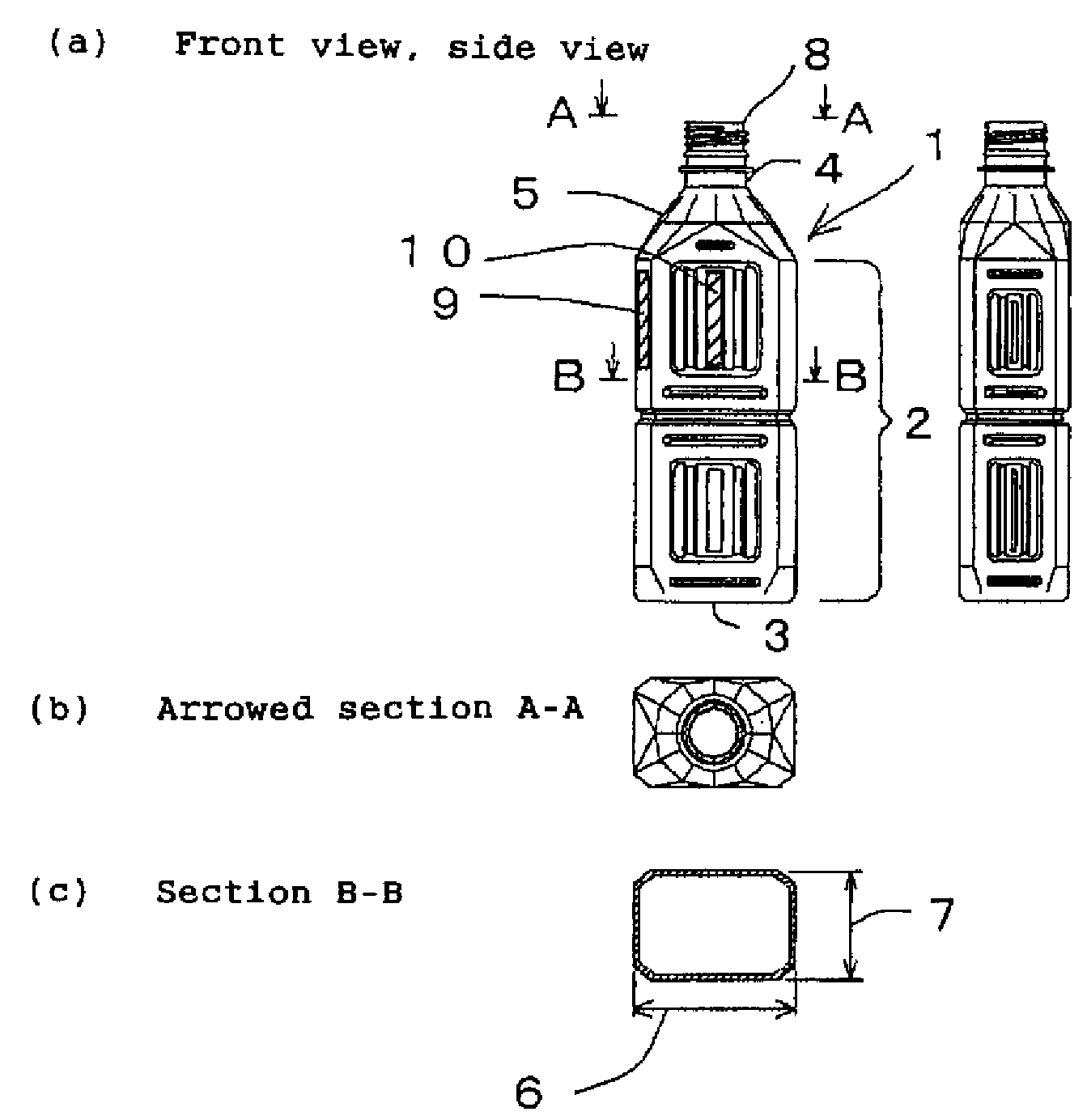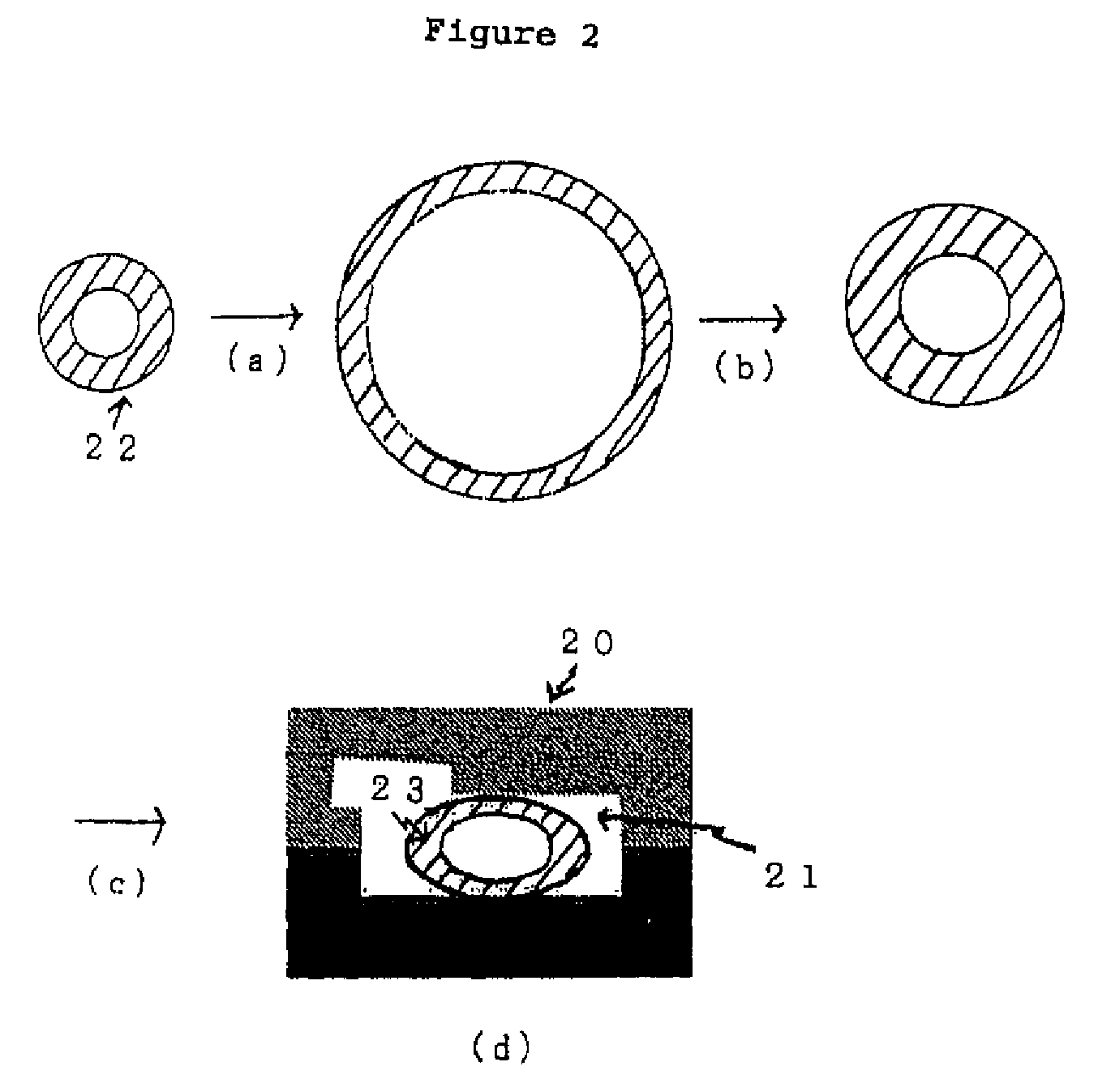Flat container comprising thermoplastic resin and method for molding the same
a thermoplastic resin and container technology, applied in the direction of synthetic resin layered products, transportation and packaging, other domestic articles, etc., can solve the problem of exerting an adverse effect on stretch molding
- Summary
- Abstract
- Description
- Claims
- Application Information
AI Technical Summary
Benefits of technology
Problems solved by technology
Method used
Image
Examples
embodiment 1
[0131]A bottomed parison, which was a first intermediate molded article having an outside diameter of 22 mm, a thickness of 3.4 mm and a height of 80 mm, was preformed from commercially available polyethylene terephthalate (PET), heated air was blown in by free blowing and the first intermediate molded article was subjected to primary blow molding to form a second intermediate molded article having an outside diameter of 90 mm.
[0132]The second intermediate molded article subjected to the primary blow molding was caused to shrink and be fixed for 8 seconds in an oven at 600° C. and a shrunk, molded article having an outside diameter of 60 mm, which was a third intermediate molded article, was obtained.
[0133]A mold for second blow molding (set at 140° C.) had a cavity (section: minor axis 50 m, major axis 66 mm) with the rectangular section shown in (d) of FIG. 2, and an upper portion of a body molding surface of the blow mold on the long-side side of a container was coated with a flu...
embodiment 2
[0136]A flat container having an elliptical section and a flatness ratio of 1.5 was molded in the same way as in Embodiment 1, with the exception that primary blow molding was performed by using a mold for primary blow molding instead of performing free blow molding and that a mold which upper portion of a body molding surface thereof on the long-side side (major axis side) of a container was coated with a fluororesin and which had a cavity (section: minor axis 47 mm, major axis 70 mm) with an elliptical section was used as a second blow mold.
embodiment 3
[0137]A flat container having a rectangular section and a flatness ratio of 2.0 was molded in the same way as in Embodiment 1, with the exception that primary blow molding was performed by using a mold for primary blow molding instead of performing free blow molding and that a mold which upper portion of a body molding surface thereof on the long-side side of a container was coated with a fluororesin and which had a cavity (section: minor axis 40 mm, major axis 80 mm) with a rectangular section was used as a second blow mold.
PUM
| Property | Measurement | Unit |
|---|---|---|
| elongation | aaaaa | aaaaa |
| temperatures | aaaaa | aaaaa |
| temperatures | aaaaa | aaaaa |
Abstract
Description
Claims
Application Information
 Login to View More
Login to View More - R&D
- Intellectual Property
- Life Sciences
- Materials
- Tech Scout
- Unparalleled Data Quality
- Higher Quality Content
- 60% Fewer Hallucinations
Browse by: Latest US Patents, China's latest patents, Technical Efficacy Thesaurus, Application Domain, Technology Topic, Popular Technical Reports.
© 2025 PatSnap. All rights reserved.Legal|Privacy policy|Modern Slavery Act Transparency Statement|Sitemap|About US| Contact US: help@patsnap.com



